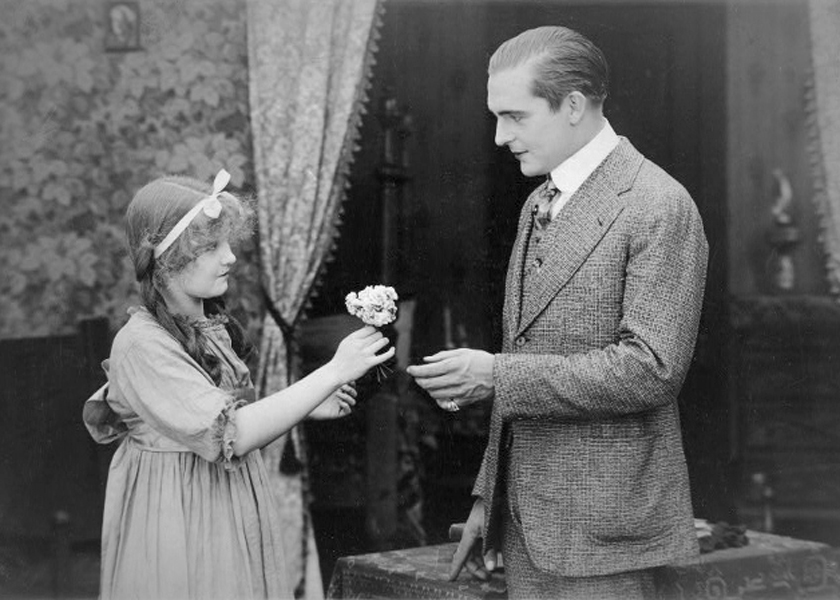Synopsis
Prince Karl Heinrich, heir to the throne of Rutania, is isolated and lonely throughout his childhood and teenage years. The King, his father, denies him the companionship of other children who are considered below his station. His only companion and comfort is his faithful tutor, Dr. Juttner (Karl Formes Jr.).
As he reaches adulthood, Prince Karl (Wallace Reid) goes to Heidelberg University. At the university, Prince Karl has many friends among his fellow students. At the local tavern, the students joyfully celebrate their youth and companionship. Karl finds love with Kathie Ruder (Dorothy Gish), the niece of the innkeeper. Karl’s newfound happiness is short-lived. War breaks out with a neighboring country, and the King is killed. The conflict can be ended by a marriage between Karl Heinrich and the princess royal of the enemy nation. Karl must carry out his duty to Rutania. Regretfully, he bids farewell to his comrades and to his love. Karl and Kathie will never meet again, but they vow that their love will remain forever in their memories.
Discussion
Old Heidelberg, released November 14, 1915, was the second film made by the Fine Arts Film Company and released by the Triangle Motion Picture Company. Triangle Films was formed in 1915 by Harry E. Aitken, a Midwestern businessman, who had been involved in film production, distribution, and exhibition since 1910. In 1913, Aitken had signed D. W. Griffith for his Majestic Studio and financed Griffith’s The Birth of a Nation (1915). The great success of the film made Aitken a fortune on his investment. Aitken invested his earnings in a film production and releasing company, Triangle Motion Picture Company. Triangle, organized in July 1915 with Aitken as president, would produce feature films (films of at least five reels with a running time of about one hour). Aitken engaged D.W. Griffith as supervisor of production at Fine Arts, one of the three production units of Triangle (the others were Keystone Films, supervised by Mack Sennett, and Kay-Bee Films, managed by Thomas Ince).
Aitken and his associates in the newly founded company contracted a number of experienced actors from the Broadway theater to star in Triangle films. Many actors who had made their names in the theater signed with Triangle, including Billie Burke, DeWolf Hopper, Eddie Foy, H.B. Warner, Dustin Farnum, W. S. Hart, and Douglas Fairbanks. Several actors who had worked with D.W. Griffith, including Monte Blue, Dorothy Gish, Lillian Gish, Ralph Lewis, and Mae Marsh, came to the studio with him.
Several members of the production staff at Fine Arts were recruited from the theater. John Emerson, who directed Old Heidelberg, had been a stage director for the Shubert Organization from 1908 through 1911 and was managing productions for theatrical producer Charles Frohman when he joined Fine Arts.
Fine Art’s initial film, The Lamb, starring Douglas Fairbanks, was released, to considerable success, seven days (November 7) before the release of Old Heidelberg. Both films run about one hour, the standard length for a feature in 1915. In contrast, The Birth of a Nation is more than 3 hours long. Griffith intended this epic film to awe the audience with its scope and complexity; the features produced by Fine Arts were only intended to please and entertain.
Old Heidelberg is a sentimental romantic drama that has an appealing, bittersweet love story of a neglected, lonely, warm-hearted prince and a beautiful, tender, affectionate young woman. Stern duty trandsends love and separates them. They retain their love in memory.
Emerson, inexperienced in film direction, develops the plot with care and a minimum of action. The initial scenes of the lonely and bored child are static. Erich von Stroheim adds some zest as a punctilious tutor who objects to the prince’s attempts to make friends outside the palace. The action picks up when Karl goes to college. His comrades, all wearing the required university attire, carouse (mildly) at the local inn, their favorite meeting place. The scenes of Karl and Kathie are played for wistfulness and delicacy. Closer views of the lovers would enhance the effect of these scenes. The war is pictured briefly, the fighting shown at a considerable distance.
Stars Wallace Reid and Dorothy Gish had been in films several years and were established with film audiences. Their acting, natural and tender, is emotionallly correct. Erich von Stroheim, recently arrived from Austria and billed fourth, plays the valet energetically and ramrod stiff; the role fits him perfectly. Von Stroheim provided advice on the details of military dress and comportment.
The 1915 film is based on an 1899 novel, Karl Heinrich, by Wilheim Meyer-Forster and on theatrical versions of the book. Stage versions, under the title Alt Heidelberg, were produced by the author in Germany (1902) and on Broadway by the Schubert Bros. (1903) and Richard Mansfield (1904).
In 1924, a musical version, The Student Prince, was written by Dorothy Donnelly and Sigmund Romberg. Ernst Lubitsch directed a silent film version in 1926, The Student Prince of Old Heidelberg, with Ramon Navarro and Norma Shearer. MGM produced the musical, The Student Prince (1954), directed by Richard Thorpe and starring Ann Blyth and Edmund Purdom, with the singing voice of Mario Lanza.
Further Reading

